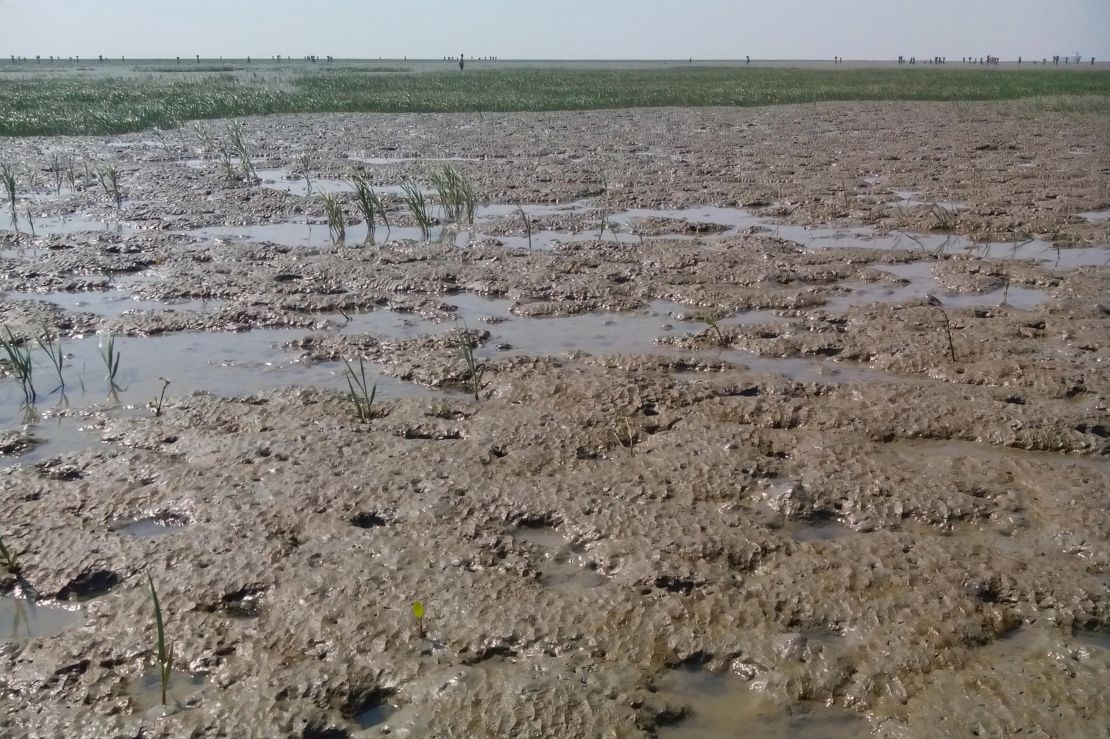Story highlights
About one million Rohingya refugees are in Bangladesh
The plan has drawn criticism from human rights activists
Bangladesh is moving ahead with a controversial plan to move Rohingya refugees to a low-lying island, with construction of facilities to begin “very soon.”
About 100,000 of the one million or so Rohingya refugees living in Bangladesh will be moved to Thengar Char, a remote, flood-prone island in the Bay of Bengal by November 2019, according to details of the $278 million plan released by the office of Mustafa Kamal, Bangladesh’s minister of planning.
Some 626,000 mainly Muslim Rohingya have arrived in Bangladesh since August, joining an existing Rohingya refugee population of up to 300,000. They say they’ve fled widespread violence perpetrated by the military in the north of Myanmar’s Rakhine State.
The Myanmar military denies wrongdoing and says it’s targeting terrorists responsible for killing security forces. The United Nations, the US and the UK have called the situation in Rakhine State “ethnic cleansing” and on Tuesday the UN human rights chief suggested that genocide “cannot be ruled out.”

Biting criticism
The international community has praised Bangladesh for taking in the refugees but its plan to move some of them to Thengar Char has been met with biting criticism.
The plan was approved by Bangladesh’s Prime Minister, Sheikh Hasina, on November 28 and the same day Amnesty International called upon the Bangladeshi government to abandon the proposal, calling it a “terrible mistake.”
“Having opened its doors to more than 600,000 Rohingya over the past three months, the Bangladesh government now risks undermining the protection of the Rohingya and squandering the international goodwill it has earned. In its desperation to see the Rohingya leave the camps and ultimately return to Myanmar, it is putting their safety and well-being at risk,” said Biraj Patnaik, Amnesty International’s South Asia director.
The island is about 30,000 hectares (about 74,000 acres) in size, more than 37 miles from the mainland, officially uninhabited and mostly flooded during heavy rain or monsoon season, District Forest Officer Amir Hossain Chowdhury told CNN in January.

In response to complaints from human rights groups, the Bangladesh Navy conducted a study which found that the island could be habitable with land reclamation and work to the shore line. Eventually, the government plans to build nearly 1,500 barrack houses and 120 shelter centers on 60 hectares (150 acres) of land on the island.
“Although the land is flooded due to tidal effect of sea, it is very much controllable by land development and shore protection work. Many countries in the world reclaim the land in the sea by the same process,” Kamal’s statement said.
Bangladesh is also building a 3,000-acre refugee camp at Kutapalong, near the border with Myanmar, where most Rohingya are currently living in makeshift camps.

Is genocide taking place?
The UN Human Rights Council held an emergency meeting in Geneva Tuesday to discuss the Rohingya crisis, during which Zeid Ra’ad Al Hussein, the High Commissioner for Human Rights suggested that genocide may have been committed against the Rohingya.
“Witnesses in different locations have given concordant reports of acts of appalling barbarity committed against the Rohingya, including deliberately burning people to death inside their homes; murders of children and adults; indiscriminate shooting of fleeing civilians; widespread rapes of women and girls; and the burning and destruction of houses, schools, markets and mosques,” Zeid said in Geneva.
“Can anyone rule out that elements of genocide may be present?”
He added that it’s up to a court to determine whether genocide has taken place. The UN has a detailed definition of genocide, which it describes as acts committed with an “intent to destroy, in whole or in part, a national, ethnical, racial or religious group.”
Some international legal experts argue that once a situation is defined as genocide, the UN Security Council is then obliged to intervene. Former UN Secretary-General Kofi Annan endorsed that legal position in 2004.
The Burmese government doesn’t use the word Rohingya and considers them illegal immigrants even though some Rohingya families can trace their roots in Rakhine State back decades.
“Refusal by international as well as local actors to even name the Rohingyas as Rohingyas – to recognise them as a community and respect their right to self-identification – is yet another humiliation, and it creates a shameful paradox: they are denied a name, while being targeted for being who they are,” Zeid said Tuesday.
CNN’s Ben Westcott contributed to this report


















